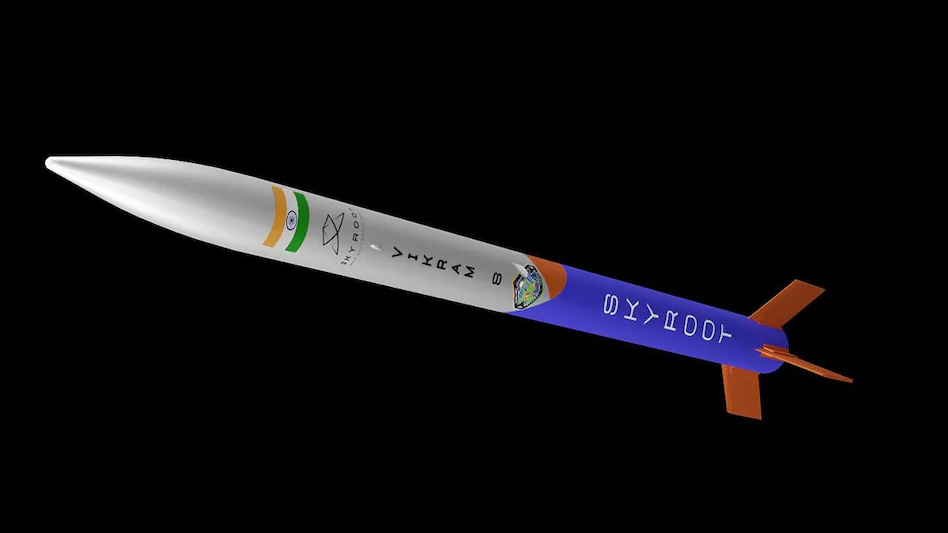The Hyderabad-based space start-up Skyroot completed a successful rocket engine test at the ISRO Propulsion Complex (IPRC) in Mahendragiri, Tamil Nadu, with the help of the Indian Space Research Organization.
The Raman-II engine, developed by Skyroot to produce 820 Newton (Sea Level) and 1,460 Newton (Vacuum) thrust with a nominal chamber pressure of 8.5 bar absolute, was tested on Friday in the Liquid Thruster Test Facility (LTTF) in IPRC, according to a statement from ISRO’s Bengaluru headquarters on Saturday.
Monomethylhydrazine and Nitrogen Tetroxide are used as propellants in the additively built, regeneratively cooled engine.
“The 10-second duration test achieved the expected performance in terms of start transient, steady state, and shut-off,” the report stated.
Skyroot aims to include the Raman-II engine into the Vikram-I’s fourth stage.
The statement read, “During the test, the test facility systems demonstrated normal performance, meeting the engine inlet conditions at T0.”
It was noted that the instrumentation equipment also worked as predicted, further confirming the precision and dependability of the test findings.

According to the space agency, this assistance demonstrates ISRO’s dedication to fostering commercial companies, start-ups, and Non-Governmental Entities (NGEs) in the growth of the nation’s space ecosystem.
The capabilities of the Raman-II engine will be further validated and improved in the future through a number of further experiments.
The Raman-II engine was used in the test, which was carried out in the Liquid Thruster Test Facility at the ISRO Propulsion Complex. According to a statement made yesterday by ISRO’s Bengaluru headquarters, the Raman-II engine was developed by Skyroot Aerospace to provide 1,460 Newton (Vacuum) and 820 Newton (Sea Level) thrust and had a nominal chamber pressure of 8.5 bar absolute. The Raman-II engine will be mounted on the fourth stage of Skyroot’s launch vehicle, also known as the Vikram-I.
Regenerative cooling is used to cool the nitrogen tetroxide and mono-methyl hydrazine that are created using additive manufacturing techniques and used as the engine’s fuel. The statement said that the start transient, steady state, and shut-off performance objectives for the ten-second test had been satisfied.
According to the statement made public by ISRO, the systems at the testing site functioned normally during the test and were able to meet the criteria for the engine’s intake conditions at T0. According to the study, the instrumentation equipment’s performance also met expectations, further ensuring the consistency and accuracy of the test results.

READ ALSO – Twitter is Renamed As “X” According To Elon Musk
Elon Musk, the owner of Twitter, said on Sunday that he intends to rename the service and get rid of its recognisable logo


